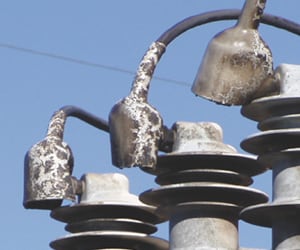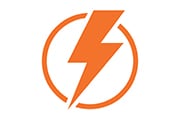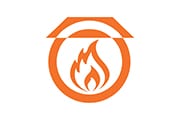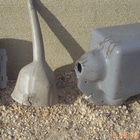
Trend Insight
Reliably Protect Systems and Wildlife
Only products made from the right materials will prevent power disruptions from wildlife damage while also protecting the wildlife which would otherwise be harmed. By: Steven Parker, Business Development Manager, Wildlife and Asset Protection
With the increased pressure on utilities to provide reliable power while at the same time protecting wildlife comes a similar increase in the number of suppliers of overhead raptor/bird covers. All shapes and sizes of covers are suggested to meet recommendations proposed by environmental groups such as the Avian Power Line Interaction Committee (APLIC), but the key to success is much more than the design features. In the end, it is the material science aspect of the product that will determine its effectiveness and life span in the harsh outdoor environment. There are many molders that can produce wonderful looking components, but few understand what it takes to survive in a medium voltage application, outside, for an extended period of time.
Four Areas of Importance
The key areas of study for raptor cover material would be:
- Tracking and Erosion (TERT)
- UV Stability and Chemical Resistance
- Electrical Withstand
- Thermal Endurance
Without a doubt, knowing product limits in these areas is vital. Engineers want to choose a part that will provide the electrical protection required, and at the same time insuring that they are not creating a flashover situation down the road or having to replace product every 4-5 years because it was falling off the insulator.



Tracking and Erosion
The carbonization of the material is caused by the combination of leakage current, contamination and water vapor. The leakage current steams off the water vapor, creating a dry band that produces a high temperature arc, carbonizing the cover material. In tracking, this conductive track grows out across the material, and the effectiveness of the cover can quickly become compromised. With erosion, the arc remains rooted in one spot and slowly burns a hole through the material. In either case flashovers can occur. At TE, we custom blend our polymers with additives that create a virtually non-tracking material that is used in all our raptor covers. TE uses an Inclined Plane Variable Step Voltage Test (ASTM D-2303), as it gives good correlation to product performance.

UV Stability and Chemical Resistance
Sitting on top of a pole, exposed to the elements, a raptor cover needs to take the abuse for many years, as the expense of putting up a replacement cover is significant. Material degradation due to UV, snow, salt, and chemicals can happen rapidly if the polymer formulation isn’t right. Loss of mechanical strength and electrical performance could happen in just a few short years, causing the covers to fall off or allow such limited protection that flashovers occur through the covers. UV tests such as ASTM G-90 or Xenon lamp (IEC 1109, 5000 hrs.) are excellent tests to use when comparing products. Tests like Tensile Strength and Ultimate Elongation (ASTM D-638), Chemical Resistance (ASTM D-543) and Accelerated Aging (ISO 188) can also give one a good idea if the product will last. TE goes the extra mile by cross-linking the material, providing increased strength and toughness, superior chemical and environmental resistance, and more stable electrical performance.

Electrical Withstand
While we want the product to last mechanically, we must also look at the electrical requirements of the application and how they are tested. Some manufacturers use a dry withstand test when rating the cover’s capability rather than a wet withstand test. Since much of the rating depends on atmospheric conditions, a dry test will show a higher voltage rating for the same air gap than a wet one. But unless the product is restricted to a dry climate like Arizona, the wet test would be the one to give the best assessment of what the product can actually handle. At TE, we typically look at a 1 minute AC wet withstand test for our covers. When you are thinking in terms of protecting against momentary animal contacts, one minute is a very long time. Look for ASTM- D257, D-150 and D-149 for comparing electrical characteristics.

Thermal Endurance
How well the material can take temperature swings over its lifetime is a definite consideration when the manufacturer is making covers that could be used anywhere in the world. Whether you are installing in the cold, dry winters of Canada or in a hot and humid country like El Salvador, the material must be designed from the start to take the beating. There are many thermal stabilizers that can increase the overall robustness of the material and extend its life. Certainly the cross-linking done at TE takes this to a higher level, especially on the high temperature side where the material can take severe hits without melting or igniting. Tests like IEEE 1-1969, IEC 216, and ISO 188 would be good ones to review when comparing materials for thermal endurance.



Protection for Harsh Conditions
Every environment is a harsh one when you are looking at extended life outdoors. Whether the product can take Mother Nature’s abuse is up to the material science behind it. Suppliers that cannot provide test data quickly should be removed from consideration, and those that do can easily be compared to one another. TE designs their raptor covers from the start with a 30-year life expectancy.
